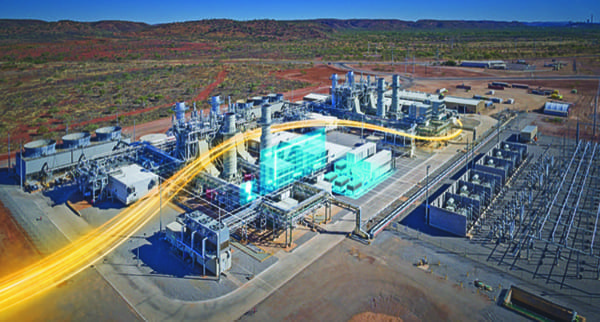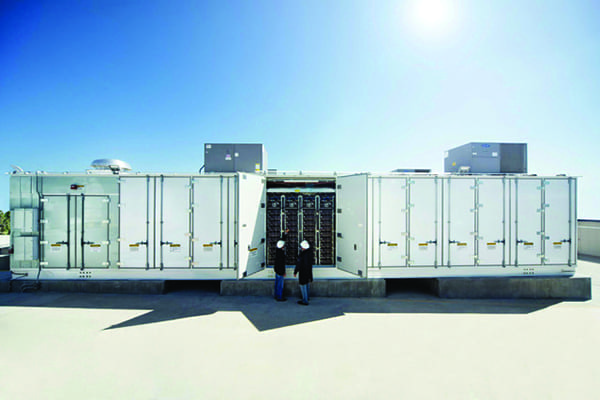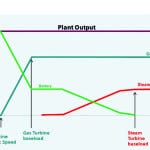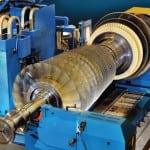Maintaining grid reliability and stability is increasingly challenging as renewable energy resources are added to the power mix. Combining battery storage systems with gas turbine units can improve overall plant performance and ensure black-start capability is available, when needed.
Keeping the lights on has been the mantra from governments and utilities, particularly after several high-profile power cuts in the last decade. There has been much spoken about the reliability of the electrical network and concerns raised by the diminishing input from fossil-powered generation. This concern was raised again last year when a large-scale power outage struck South America.
In June 2019, a large-scale blackout affected Argentina, Uruguay, and Paraguay, leaving an estimated total of 48 million people without electrical supply. According to local supply company Edesur, problems with several 500-kV transmission lines disrupted the flow of electricity from two dams to Argentina’s power grid. It took more than 24 hours for electricity to start flowing again, highlighting the challenges of restarting a power grid in such a situation. Preventing these outages is one thing, but ensuring that power is restored as quickly as possible is equally important.
Black-Start Challenges
The procedure that network operators adopt to restore power in the event of a total or partial shutdown of the electricity transmission system is called black start. Most nations have a requirement that this black-start capability is built into the power grid, with certain generating facilities having specific black-start capabilities. Traditionally, power plants use small diesel generators to start turbines or to provide power references, such as voltage and frequency, to allow renewable power generators to reconnect. Another option is to use battery storage, such as forms part of Siemens’ Siestart system (Figure 1).
 |
|
1. Adding a lithium-ion battery energy storage system to a combined cycle gas turbine power plant offers several benefits, including black-start functionality. Courtesy: Siemens |
Grid stability and reliability have always been top priorities for network operators, and will continue to be, but with the growth of renewable energy solutions on the grid, the challenges of maintaining that stability and reliability are growing. There is no denying that the growth of renewable energy is positive news for the worldwide fight against climate change; however, there are some other consequences of this growth that operators need to consider. When grid stability is considered, it must be recognized that both wind power and solar photovoltaics are highly dependent on the weather, which can lead to some variation, which needs to be balanced and compensated. It is a quite simple correlation—the higher the share of renewable energy sources, the harder it is to ensure stability.
However, as mentioned previously, grid stability needs support, otherwise there can be serious consequences, even in highly developed countries where significant blackouts have also occurred, such as in South Australia in 2016 or Argentina in mid-2019. It can and does happen, and it is really not an easy exercise to restart grids, once they are black.
The Value of Black-Start Capability
Around the globe, not all existing power plants are able to start without an external power supply. It is obvious that black-start ability is an asset to be considered. There are already power plant operators around the world who agree with this sentiment and recognize the business value of offering black-start capabilities. Siemens has already exercised a couple of upgrades for existing plants, for instance, in the Netherlands and in the UK.
As previously mentioned, the higher the share of renewables, the higher the efforts required to maintain grid stability. Increasing the share of renewables also requires additional measures to be taken, such as actively controlling the frequency and voltage in the systems. And it is also necessary to have some fallback positions in case of sudden changes of the generation caused by the weather, which can occur at any time. The ability to predict the weather and plan accordingly has improved immensely in recent years, but it is still not totally reliable. This improved weather profiling also cannot account for problems that may occur with individual units.
Benefits of Battery Storage
There are several possible solutions, such as flywheels or synchronous condensers and FACTS (Flexible AC Transmission Systems), but Siemens’ Siestart technology is based on battery storage. The solution combines the performance of a gas turbine with a battery energy storage system (Figure 2) and comprises very fast and reliably responding lithium-ion battery technology combined with cutting-edge power electronics and control for the fast and accurate response required by ancillary services. Because it is designed with both active and reactive power components, it can offer reliable black-start functionality in the event of grid collapse. This co-location of gas turbine and batteries can also be used for ramping up and down faster, which ensures flexible operation to provide and sell ancillary services.
 |
|
2. Lithium-ion battery energy storage systems can react very fast to supply and demand changes. Being bi-directional, they can provide or absorb power depending on the need. Courtesy: Siemens |
Gas turbines are dependable machines with their reliability frequently measured higher than 98%, and they can deliver power however long it is needed. Gas turbine power plants can also start very fast—a combined cycle in less than 30 minutes and simple cycle plants in 10 minutes or less. However, they cannot achieve an instantaneous start to full power, and this is one of the aspects where integrated battery storage systems come to the game. Battery storage systems can react extremely fast. And by fast we are talking about full rated power in less than one second. Another plus is that battery storage systems are bi-directional, which means they can provide or absorb power with the same reaction times in both directions.
The message is that Siestart systems are equipped with grid-forming inverters, and all the necessary procedures can be controlled by the distributed control system (DCS), something that Siemens has a lot of experience with. Tests have shown the response time with a battery storage system in place is extremely fast, provided the battery storage system is in standby mode, which is the usual mode if the plant is in operation. The unit can deliver the full rated power of the battery storage system within less than a second. It’s not uncommon to see values of about 250 milliseconds from the moment the signal arrives at the battery storage system until it is at full load. If the requirements are extremely high, as is standard in the UK with enhanced frequency response, systems may need to be connected by hard wire, but normally the runtimes of the DCS are sufficient.
With the energy transition putting grid systems under growing pressure, because greater utilization of renewable sources does not provide sufficient inertia to support stabilizing the grid frequency, some black-start capability is essential. To ensure grid stabilization, large centralized fossil power plants that were originally designed for baseload operation now need to ramp much faster and more frequently, and provide highly flexible spinning reserve. Black start is a vital tool in the armory of utilities to keep the lights on, and as renewable energy continues to grow, so will the importance of systems such as Siestart. ■
—Mirko Düsel is CEO, Generation Service with Siemens Energy.











